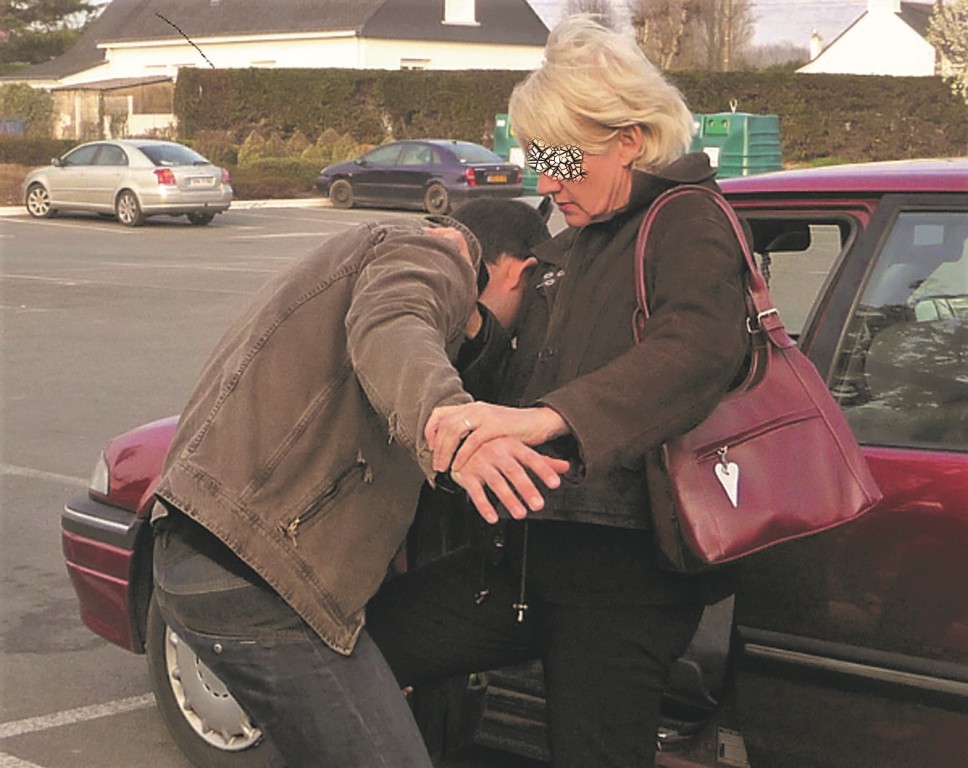The best self-defence strategies apply equally to men and women.
But women really need these self-defence strategies more because they are statistically aggressed against more frequently than men.
They experience more forms of verbal and sexual harassment. There are over 2 500 Number of rapes and attempted rape crimes recorded in Scotland from 2002/03 to 2022/23 (Source)
Adhering to proven strategies and simple motor movement techniques, might increase the chances of survival, but what people need is to transform their mindset because the situation will be terrifying
Trusting one’s instinct
Too many women enrol in self-defence courses only after being assaulted. When they recount the assault, they often say the same thing:
- “I felt a bad pre-sentiment, but I thought I was paranoid”;
- “I knew I should have left, but I stayed rooted to the spot.”;
- …
Far too many women have been conditioned to ignore this instinct that tells them danger is approaching. Yet our survival instinct is the best danger detector. Although it remains vague in its definition, the terminology “trusting one’s instinct” is regularly used in street self-defence systems. What is the reality at the level of neuroscience?
Theory of the predictive brain rather than the reactive brain
For many years, scientists believed that neurons spent most of their time dormant and only became activated when stimulated (visual stimuli, auditory stimuli, etc.). Now, the scientific community is certain that all neurons are constantly activated, stimulating each other at various rates. This activity represents millions of predictions of what we are likely to encounter in the world, based on the past experience of our entire life. This brain’s ability to anticipate reality presents an energy-saving mechanism. Our brain not only reacts to visual stimuli but also predicts what we will see before we actually see it when we are in familiar contexts. Many predictions are at a micro level: concerning the meaning of “bits” of light, sound…
Other predictions are at a “macro” level: depending on the context, when observing pre-aggression behaviours for example, the brain makes predictions about the potential outcome of these messages. This prediction leads our motor neurons to adopt certain behaviours in advance, including messages of fear. Our behaviours will generate new predictions and actions in the aggressor’s brain, etc. If the predictions are incorrect, our brain has mechanisms to correct them and emit new ones. But in the context of pre-aggression, even if all of this occurs at a neuronal speed, there is not enough time to make adjustments.
The latest research suggests that thoughts, memories, feelings, perceptions, decision-making, imagination, and many other psychological phenomena historically treated as distinct brain processes, can all be united by a single mechanism, prediction. According to Professor Lars Muckli, this means that the brain hopes to see things and tries to confirm its expectations. The brain would therefore constantly and according to a principle of probabilities operate by making predictions about the environment and update them according to what it perceives. Thus, if something unexpected appears in the known environment, the visual cortex becomes more active to integrate this new information. The brain is therefore not a reactive organ, but predictive.
Should we listen to it and trust it?
Not letting oneself be chosen as a victim
Being aware of the messages that one’s body sends to those around us. Like non-human animals, predators target those they consider the most vulnerable or the weakest. These predators seek out women who seem to be easy prey and do not want to engage in a fight. By walking with confidence and awareness of one’s surroundings, looking around and keeping one’s head and shoulders upright, it is possible to reduce the probability of becoming a target.
It’s better
Good verbal skills are a fully effective self-defence tool. When a predator engages in conversation, it is actually “interviewing” the potential victim to see if they will make a good victim.
An experienced attacker using only phrases and a well-chosen intonation often has the ability to freeze their future victim with fear. Thus reducing the likelihood of successfully defending oneself. By trying to always remain as neutral and calm as possible:
- it’s better to avoid than to flee;
- it’s better to flee than to negotiate;
- it’s better to negotiate than to fight.
But even during negotiation and as soon as it is no longer possible, as it should not be considered an end in itself, be prepared to defend one’s personal integrity without any further thought.
Avoiding confrontation
In a street self-defence situation, one of the most important weapons is the element of surprise.
Most predators facing a female audience feel more confident by nature, and this misconception should be capitalised upon. By taking a guard position indicating the practice of a combat sport or a certain expertise, it immediately indicates to the aggressor that caution is needed. In response, he is likely to become more aggressive, and the extremely important element of surprise disappears.
Maintaining a safe distance
Developed by Edward T. Hall from 1963 onwards, proxemics* is the physical distance established between people involved in a social interaction.
During interactions, individuals spontaneously place themselves in relation to each other. These behavioural adjustments are constant and automatic according to culture, gender, age, social conventions, etc. The primary goal of an aggressor is to enter this zone. He will use various stratagems to get closer. These stratagems depend on the qualities of the aggressor, such as:
- his social skills (through cunning, diversion of attention…);
- his experience (street fighting…);
- the context (presence of witnesses, confined spaces…);
- etc…
Self-defence: the safety distance
Using simple techniques
One of the main effects of the release of adrenaline following significant stress is the loss of fine motor skills. This means that simple gestures such as unlocking fingers or pulling hands out of pockets can become much more difficult under stress. As a result, the probabilities of successfully executing a complicated lock or high kick rapidly decrease or disappear altogether for many people.
Conclusion
Research based on assaults against women has shown that physical and verbal resistance strategies (biting, hitting, fighting, shouting, screaming, fleeing, or other physical self-defence techniques) are effective in thwarting these assaults. Moreover, these strategies do not appear to significantly increase the risk of serious injury. Conversely, non-energetic strategies (pleading, crying…) and not resisting generally are not effective. Some evidence even suggests that passive strategies can increase the risk of injury.
(1) Max-Planck Institute for Brain Research, (Leipzig)
(2) Institute of Neuroscience and Psychology (Glasgow)





